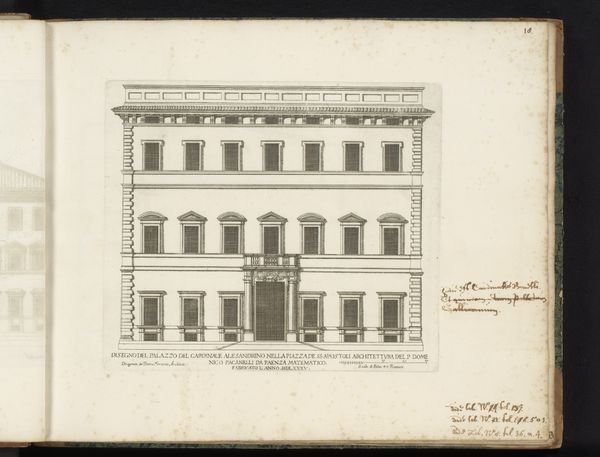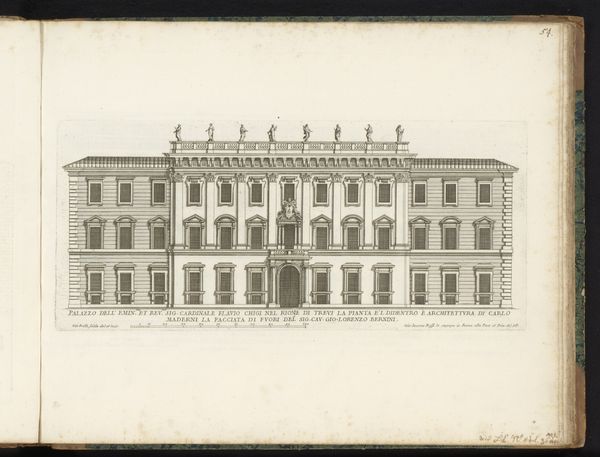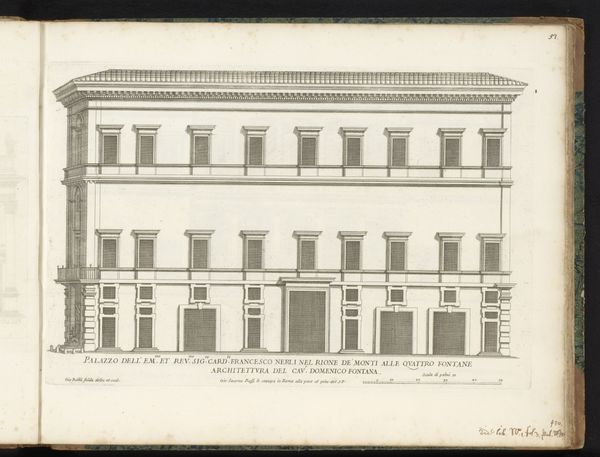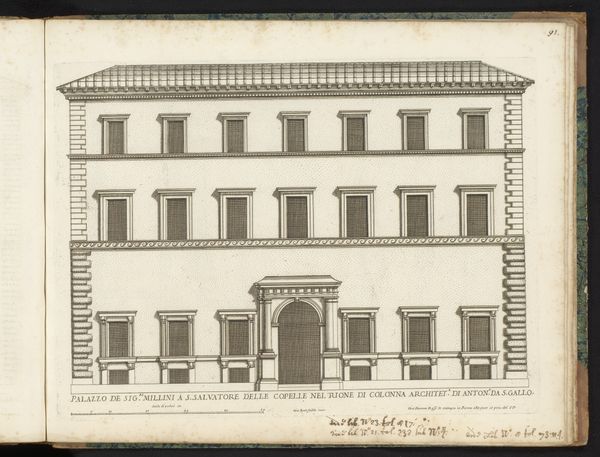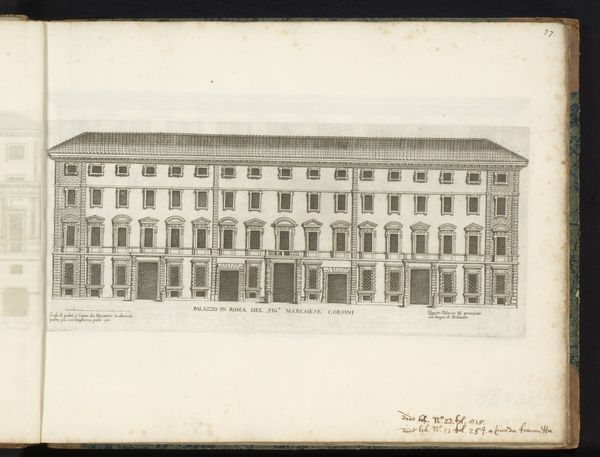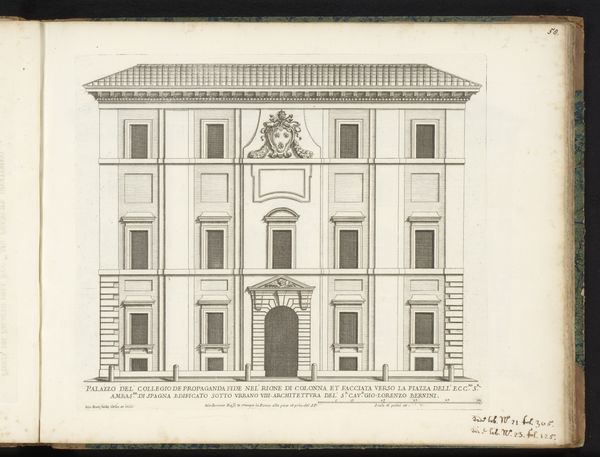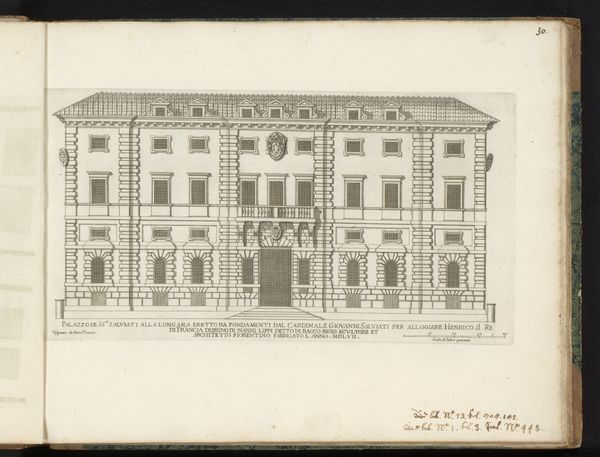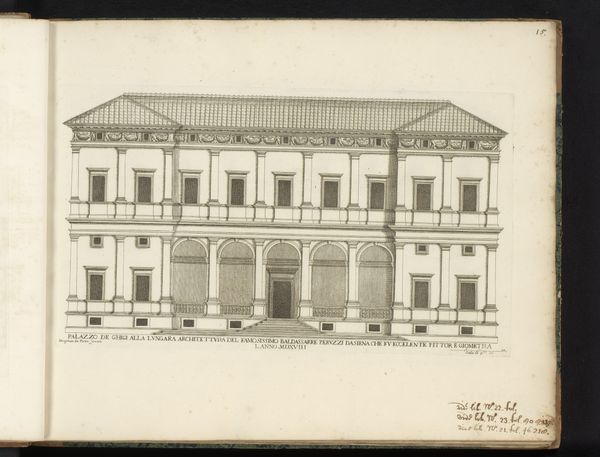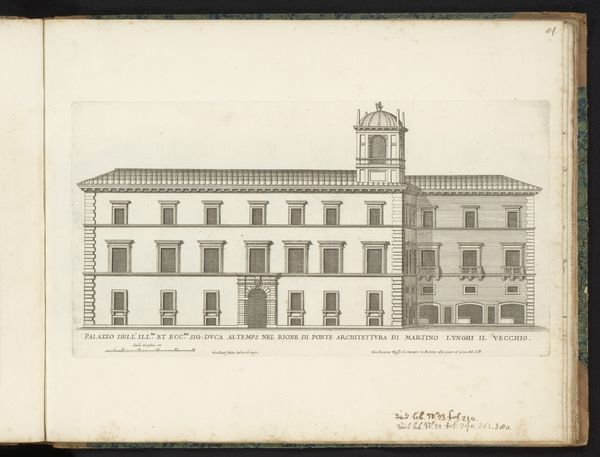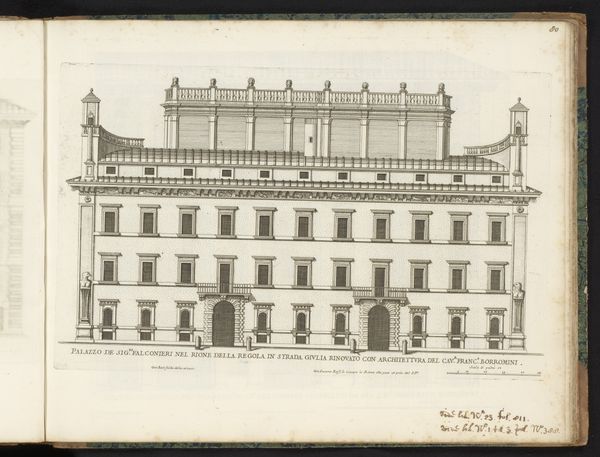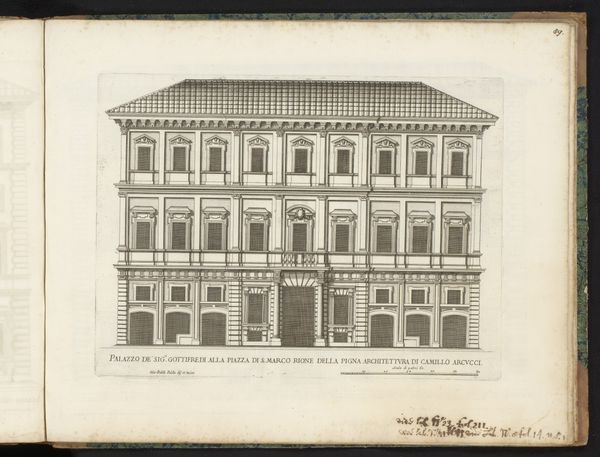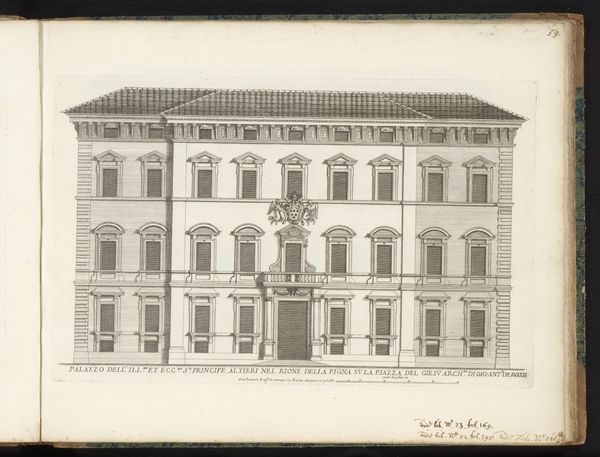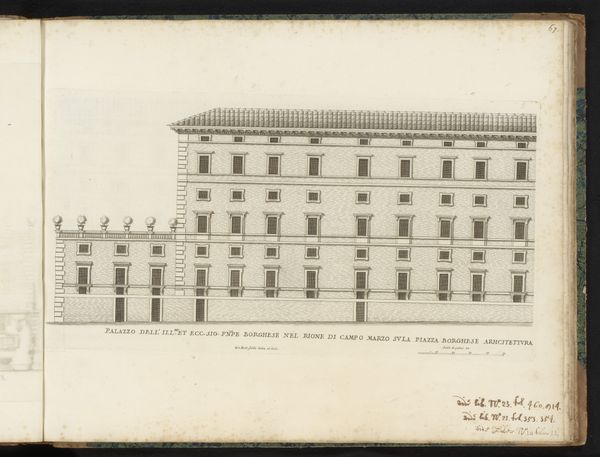
print, engraving, architecture
#
baroque
# print
#
cityscape
#
engraving
#
architecture
#
building
Dimensions: height 170 mm, width 394 mm
Copyright: Rijks Museum: Open Domain
Editor: Here we have Giovanni Battista Falda's print, "Façade van Palazzo Lancellotti," created after 1655. It's a detailed engraving. The precision of the lines is striking. What stands out to you about this print? Curator: As a materialist, I’m drawn to the socio-economic context that enabled the production of such detailed architectural prints. Consider the labor involved. Each line is a conscious decision, reflective of not just artistic skill but the engraver's understanding of the patronage system. Who commissioned this, and how would it have been used? These prints weren't simply aesthetic objects; they served specific purposes within a developing market for architectural documentation. Editor: That’s interesting. I was focused on the symmetry of the building, but I hadn’t considered how the print itself was a commodity. How does the choice of engraving as a medium speak to the socio-economic context? Curator: Engraving allowed for the mass production and dissemination of architectural ideas. Unlike unique paintings or drawings, prints like this could reach a broader audience, impacting architectural styles and tastes across regions. The materials themselves – the copperplate, the ink, the paper – each tell a story about the accessibility and value associated with this form of representation. It's crucial to question how this mediated view shapes our perception of the actual Palazzo. Was it about faithful representation, or projecting a certain image? Editor: So, it's less about the building itself and more about the circulation of its image through this print? Curator: Precisely! The print acts as a document of its time, showing the means through which architecture became a subject of broader discussion and consumption. Editor: I see now that understanding the medium and its context really deepens our understanding of the artwork itself. Thanks for pointing that out. Curator: Absolutely! Thinking about production, distribution and purpose changes how we understand historical artistic value.
Comments
No comments
Be the first to comment and join the conversation on the ultimate creative platform.
